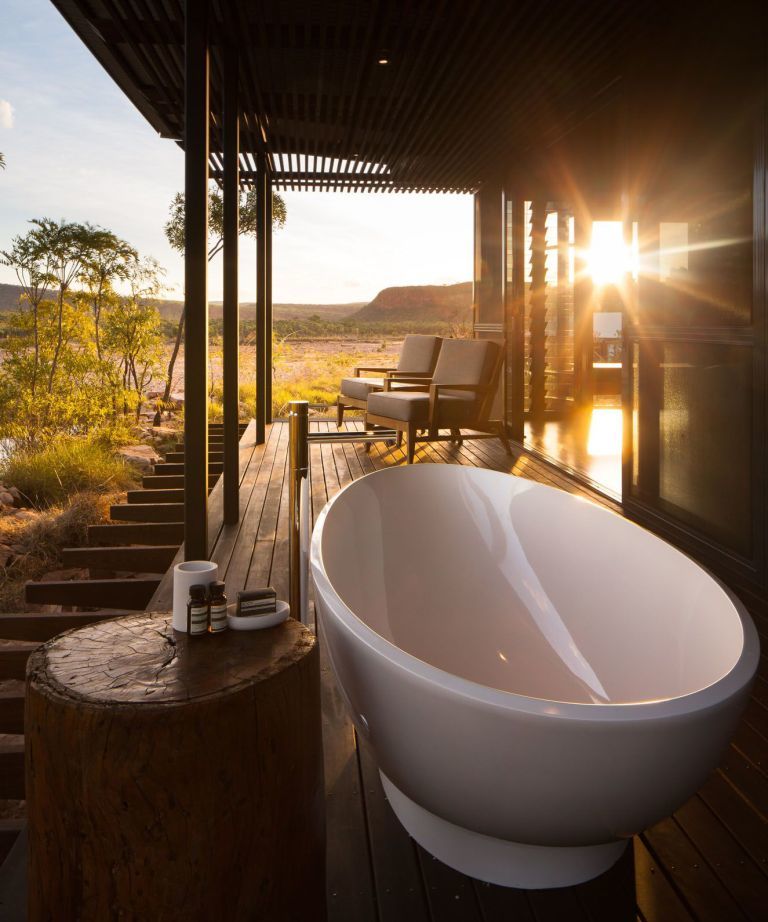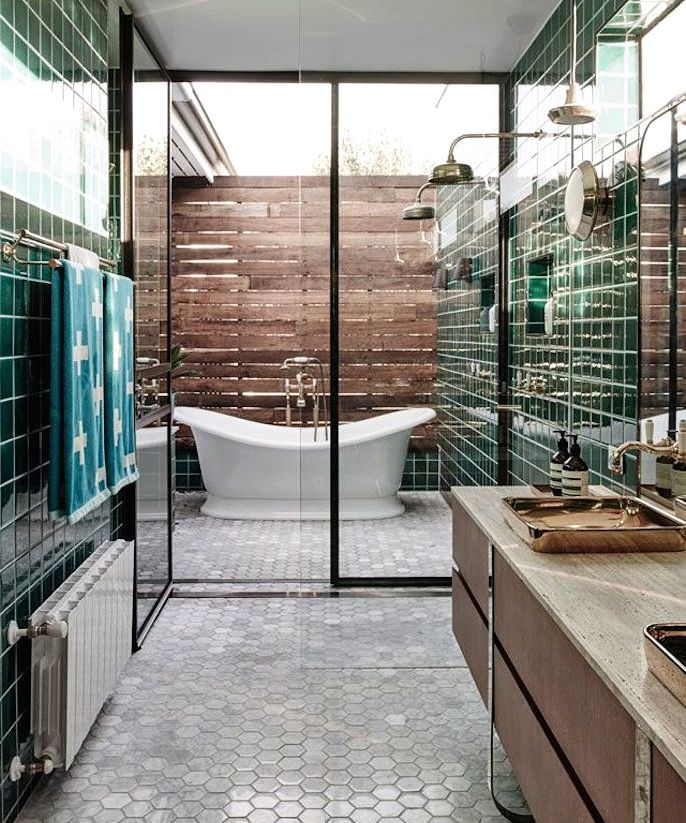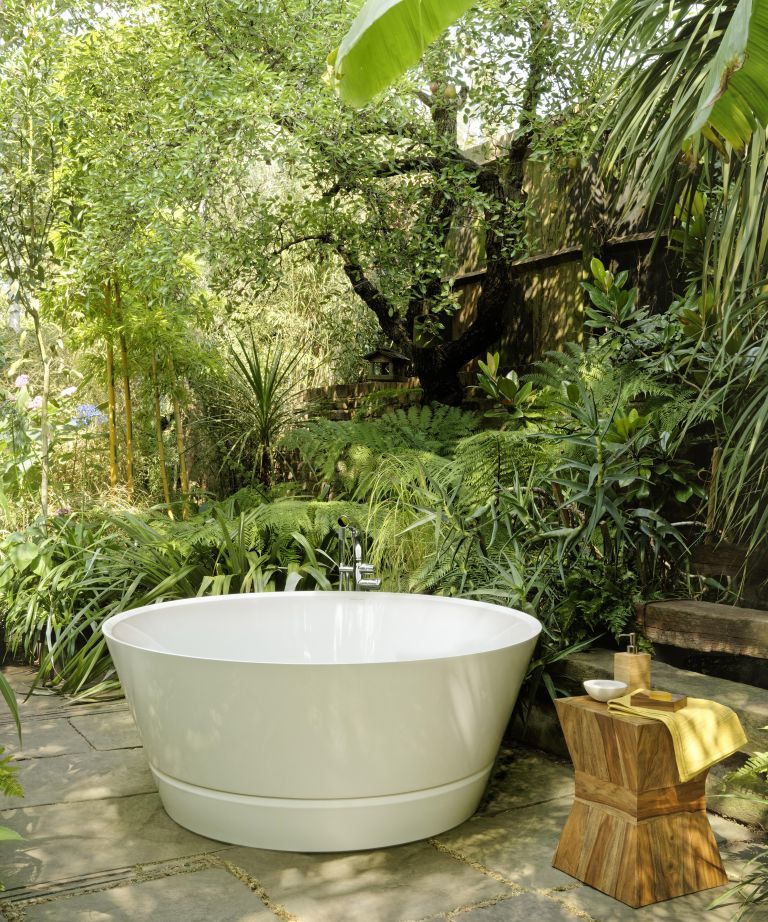As we look to blur the lines between indoor and outdoor living, we are seeing a rise in unorthodox exterior decor- from architectural salvaged goods and outdoor fireplaces, to most currently, garden bathtubs.
If you look past the initial unconventionality of this status symbol, you are left with a modern garden idea that is equally beneficial for your wellbeing. As the early signs of brighter seasons emerge, we are thinking less about mundane exteriors and more about shaking up the ordinary - especially when it involves the timeless beauty of a freestanding bathtub.
While there are a number of ways to bathe in the grandeur of this quintessential trend, Victoria + Albert Baths urge you to choose an 'opulent circular' tub, with a 'chamfered edge and sculpted detail at the base for ultimate comfort.' It is, therefore, easy to see the appeal to this remedial craze as people look for an alternative to more conventional garden water features. 
'I much prefer the outdoor bath to a spa pool that uses the same water over and over again filled with chlorine,' emphasized Bridget Foley of Bridget Foley Design.
'A bath full of freshwater or the onsen is blissful,' she added.
The bold beauty of this trend does, however, come with a caution, as this statement piece is easy to get wrong. So, we caught up with garden design experts who offered their tips on making this daring piece work in your garden.
'After a day toiling in the garden, there is nothing as sweet as soaking into a hot bath in a lush garden setting. Outdoor bathtubs allow for a multi-sensual experience; you can relax taking in the views of the garden, with the sounds of the birds, the wind in the trees, and the multitude of scents around you,' shares James Walkinshaw, Senior Designer at Xanthe White Design.
James continued, reminding us of the fundamental practicalities to consider before taking the plunge.
1. Pick the right location
Perhaps the most important factor to consider is the tub's location, as James highlights:
'Choose a private location in the garden so you can fully relax, but somewhere still within easy reach of the house.'
'On cool evenings, you'll want to be able to get indoors quickly when you get out of the bath,' he adds.
'While wood-fired tubs can add an extra dimension to the experience, my preference is a tub plumbed into the hot water line so you can draw a bath easily whenever your body is sore and ready for a soak.'
2. Consider the practicalities
Beyond the aesthetic and therapeutic value of a garden tub, James reminds us that this piece is, after all, a bath, and will, therefore, need maintaining in ways beyond your average tub.
'You'll need to allow for drainage. Can you accommodate this water in the garden? A soak pit or perforated drainage pipe could be an option. Alternatively, get a drain layer to connect the tub to your wastewater line,' he suggests.
'You'll also need to cover the tub when not in use. This could be a timber cover or something as simple as a tarpaulin with stretchy ties.'
3. Look beyond the tub

As a designer, James reminds us that the overall impact stretches beyond the tub. He urges us to look beyond the feature and prepare your garden so that it showcases the furnishing in the best looking (and most practical) way possible.
'Create a place to hang a towel or a robe and something soft to step out onto. A bench seat is a great addition as it allows you to dry your feet before popping on your slippers and doubles as a place for a candle,' James suggests.
He also urges us to think about the lighting, sharing: 'Garden spike spotlights can help to illuminate your path to the bath but avoid too much artificial light around your tub. I stick to one or two candles for a truly natural experience.'
Could this be our most daring and yet elegant summer yet?



![A Tranquil Jungle House That Incorporates Japanese Ethos [Video]](https://asean2.ainewslabs.com/images/22/08/b-2ennetkmmnn_t.jpg)









